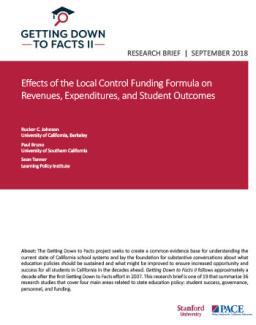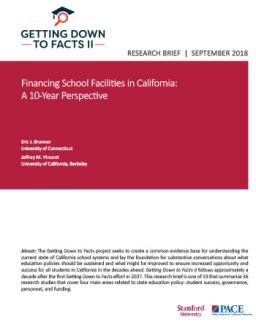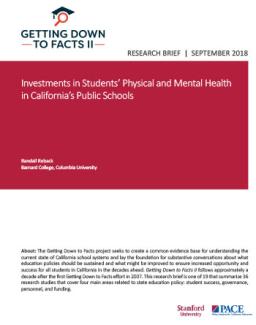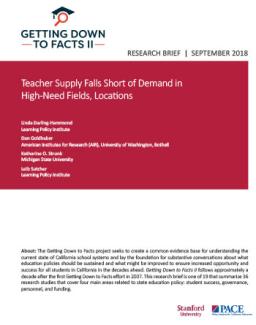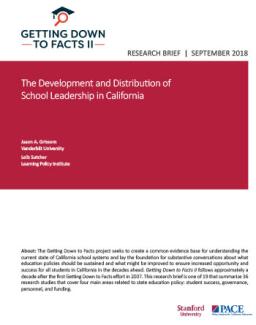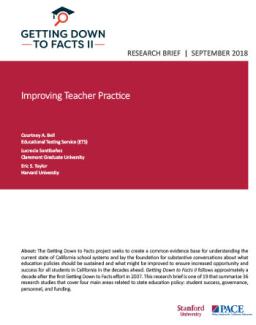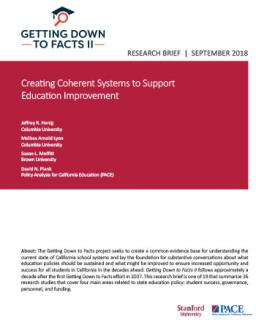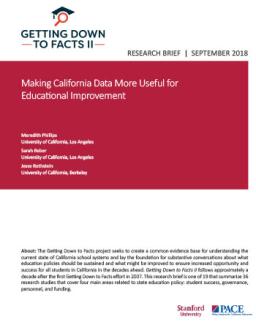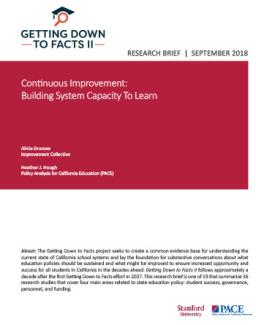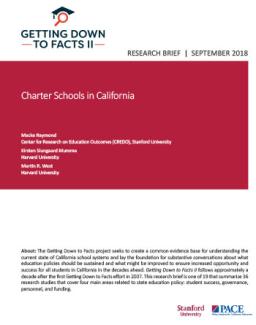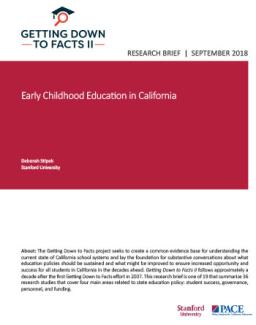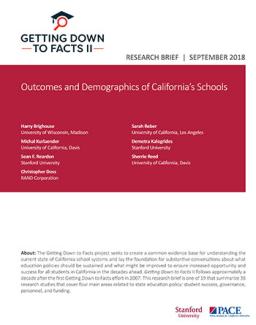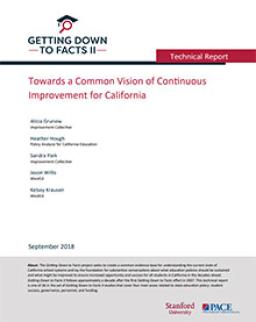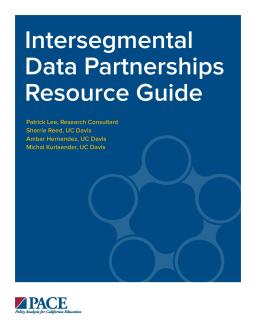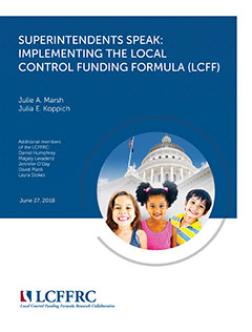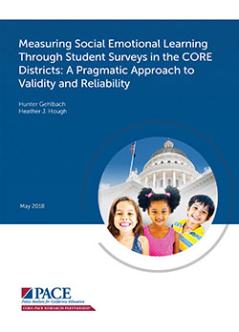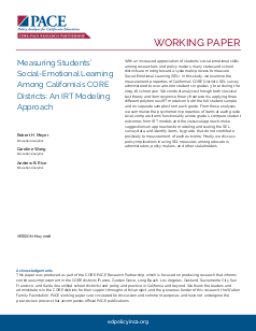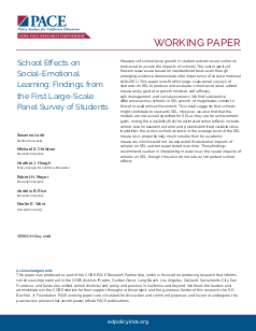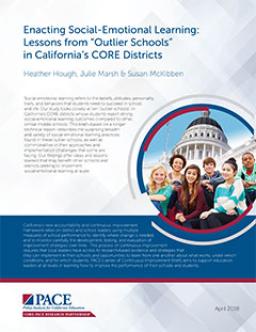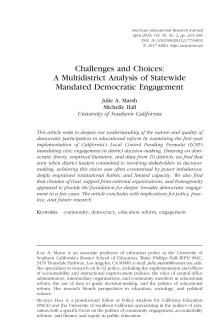Summary
California's Local Control Funding Formula (LCFF) has increased per-pupil revenues, especially for low-income districts, and provided more flexibility in expenditures, leading to improvements in student outcomes. The funding was distributed based on the proportion of disadvantaged students, and expenditure increases were primarily allocated to teachers, pensions, and special education. The policy was implemented during a time of increased K-12 funding after the Great Recession and existing revenue distribution patterns.
Summary
California's public school system has a vast inventory of buildings and properties, but many are in poor condition. The state's current school facilities funding system is criticized for not targeting aid towards districts with the greatest facility needs, resulting in a relatively regressive finance system. Local sources of funding greatly outstrip state support, and charter school facility funding continues to expand.
Summary
Children's health, especially in low-income households, affects their future success. California has improved access to healthcare but still has gaps due to poor quality care and lack of access to providers. Mental health is a growing concern, but the state has fewer services in schools than other states. The brief explores the benefits of school-based health services, which are currently lacking in California, and estimates it would cost less than $100 per pupil to improve access. California is missing out on federal funds due to its low spending on Medicaid for school-based health services.
Summary
California's teacher shortage is severe, affecting high-needs students and certain subjects such as math, science, special education, and bilingual education. Factors driving the shortage include new demands for teachers, declining enrollment in teacher preparation programs, and teacher attrition. Schools are hiring teachers lacking standard credentials and formal training. Unequal teacher distribution's impact is hard to assess due to data limitations. The shortage threatens California's education initiatives.
Summary
California's education system faces challenges in leadership development, with defunded professional development programs leading to inexperienced and high-turnover principals, particularly in high-poverty schools. Studies show that effective principals improve student learning, but current professional development opportunities are insufficient. Many principals seek more support, with rural areas receiving less coaching and development. Promising results have been seen from stronger state standards for administrator education programs.
Summary
California aims to improve the quality of teaching in its classrooms by focusing on teacher preparation and evaluation. The state's teacher preparation system aligns with standards but lacks consistent implementation. Disconnected information systems constrain policy-making, and teachers need better training for English learners. Teacher evaluation and support systems could enhance teaching effectiveness.
Summary
California has implemented new academic standards for English, math, and science, and changed how school districts are funded and held accountable. Educators face challenges implementing these standards, requiring changes in teaching, learning, and instructional materials. Teachers need professional development, improved instructional support, and collaborative learning opportunities. School principals play a key role in implementation and depend on district support. Despite positive perceptions, progress requires staying the course to let the standards take root.
Summary
California's implementation of Common Core State Standards and Local Control Funding Formula requires new support systems for districts, including professional networks and the California Department of Education. Successful implementation requires multiagency cooperation and strategic management of relations with Washington.
Summary
California's education leaders and policymakers have limited ability to make informed decisions due to weaknesses in the state's education data systems. Although California has improved its data systems, it still falls behind other states in data availability and usefulness. The California Longitudinal Pupil Assessment and Data System (CALPADS) is not integrated with other data systems, and access issues further limit utilization. With additional investment, California could develop a comprehensive statewide data system to better understand what is and isn't working in its education system.
Summary
The Local Control Funding Formula (LCFF) shifts control of education dollars to local districts, enhancing resource allocation practices. However, inadequate base funds may constrain progress. Stakeholder engagement is evolving yet remains challenging, and school board involvement is typically modest. LCFF communication and accountability mechanisms receive mixed reviews. County offices of education have expanded their role but will need to increase their capacity. Public awareness of the LCFF lags, but it enjoys substantial support.
Summary
Continuous improvement in education involves engaging stakeholders in problem-solving to discover, implement, and spread evidence-based changes that work locally to improve student success. California sees it as central to enduring education transformation. It requires an initial significant investment in time and money to make it a reality, but can improve education quality. However, California's data systems are inadequate for helping districts monitor progress, and more training and coaching are needed to build expertise for statewide implementation.
Summary
California's 1.3 million English learner (EL) students have diverse needs, and many lack access to grade-level content instruction, with English language development falling short. Bilingual and dual immersion programs benefit ELs' academic, linguistic, social, and life outcomes, but reclassification policies are currently in flux. Early-career teachers may not be adequately prepared to teach ELs, and funding mechanisms are weak. EL outcomes are complex to interpret as students move in and out of the subgroup, and education sectors are not aligned to address ELs' needs.
Summary
Charter schools serve 620,000 students in California, but their impact on traditional public schools is unknown. Charter schools have significantly better academic growth in urban areas and lower-performing groups. California's charter school authorization is decentralized with limited accountability and oversight capacity. Renewal processes are unclear, and the standards for renewal are low.
Summary
California has over 3 million children ages 5 and under, with a large proportion living in poverty or with non-English-speaking parents. Quality early childhood education is important for future success, but the state system is marked by low wages, inconsistent standards, and insufficient monitoring. Child care is expensive and doesn't meet the needs of nonstandard schedules. California has a large proportion of children in care with no standards, and identifying young children with disabilities is inadequate. There is no centralized data collection system for evaluating improvement efforts.
Summary
Public education in California shows progress, yet challenges remain in providing equal opportunities for all students. Poverty rates persist, and schools are highly segregated by race, ethnicity, family income, and language. While student outcomes are improving, significant achievement gaps exist, and California students perform worse than their peers in other states. Career technical education programs provide opportunities for diverse students, but there are gaps in tracking students' educational trajectories.
Summary
CA is shifting the responsibility for school improvement to local school districts with County Offices of Education playing a supportive role. The focus is on local leaders driving educational improvement and ensuring quality. Strategic data use is central to the implementation of this policy, with questions remaining about what data is needed, by whom, and for what purpose. This paper provides a framework for how data use for improvement is different from data use for accountability and shares lessons from the CORE Data Collaborative on how to use data for improvement in networked structures.
Summary
California needs a longitudinal data system to improve student outcomes. Meanwhile, regional partnerships between education institutions and community organizations are using data to improve outcomes. A guide was created to help leaders with data sharing and use, and presents the components of effective regional efforts around data sharing and use, with tools to dive deeper into specific factors within each component. The guide aims to serve as a framework, tool for reflection, and networking resource for intersegmental leaders.
Summary
Summary
Summary
Summary
Summary
Summary
Summary
This study explores ten "outlier schools" in California's CORE districts that have strong social-emotional learning outcomes. The brief and infographic summarize the various practices found in these schools and the common implementation challenges faced. The findings offer lessons that can help other schools and districts implement social-emotional learning at scale.
